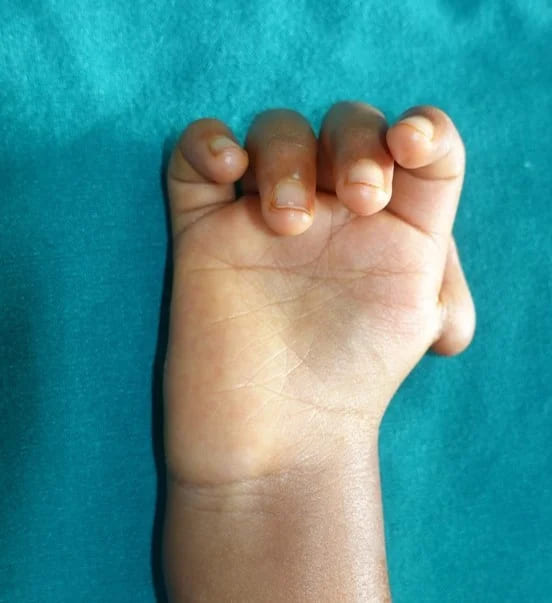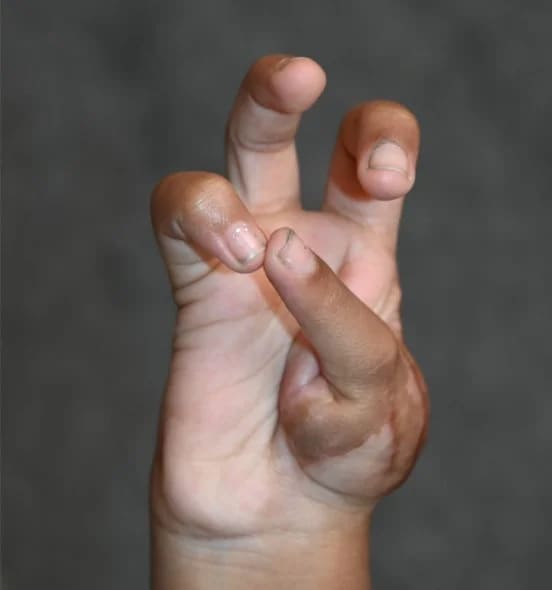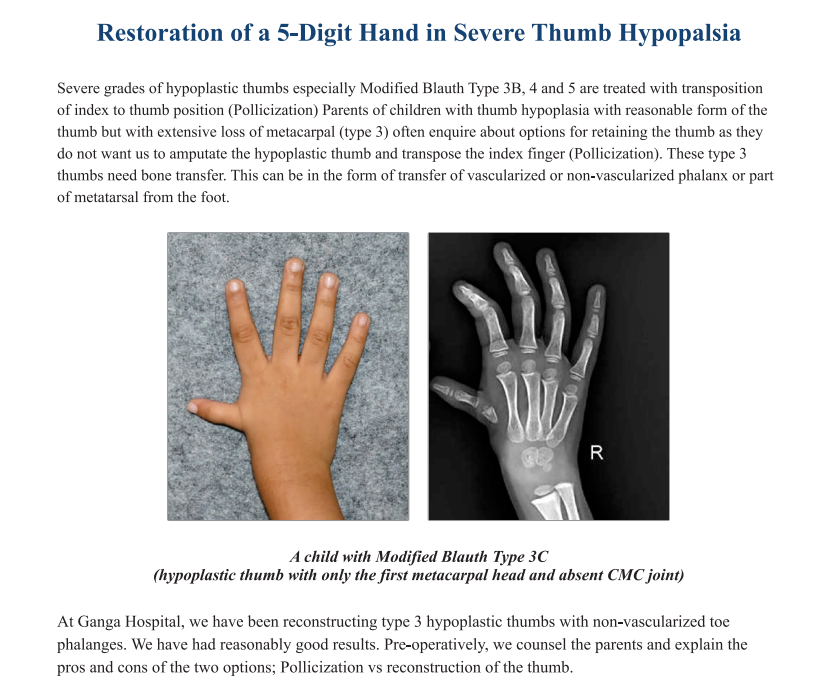Small or Absent Thumb (Hypoplastic Thumb)
A short thumb is a functional liability than a similar deformity in any of the four fingers as thumb forms 40-50% of the hand function (prehensile grasp). Careful evaluation helps us to classify the deformity and plan the surgery. Associated anomalies of the radius or syndromes are not uncommon. Derangements in blood counts, cardiac, gastrointestinal or vertebral anomalies may be present. Our specialized team of paediatricians, cardiologists and paediatric anaesthesiologists will work in collaboration with the surgeon to make the surgery as well as the post-operative period risk free.
Cause
It can be due to underdevelopment of the radial aspect of the limb. The radius, muscles on the radial side, artery or nerve may be invovled.
Treatment
The surgery is aimed at creating a thumb with appropriate size, shape, stability, mobility, strength and sensibility. The procedures involve addition of tissues, deformity correction, stabilization of unstable joints or creation of thumb. Major surgeries like opponensplasty and pollicisation may be needed in moderate to severe types.
pollicisation
pollicisation involves creating a thumb using the index finger. This is one of the major procedures in paediatric hand surgery and takes about 3-4 hours of operative microscope usage. The appropriate age for surgery is 18 -24 months. The severely hypoplastic thumb may have to be removed at the time of pollicisation. At the end of the surgery, the four fingered hand is functionally adequate with construction of a new thumb.
Post-Operative Care
The hand is immobilised in an above elbow Plaster of Paris cast. The thumb tip needs monitoring and your child will have to be in hospital for 4-5 days. At 3 weeks from surgery, the cast will be removed under anaesthesia. A smaller splint will be provided. Scar care will be initiated. The thumb will be immoblised for another 3 weeks, the end of which physiotherapy will be initiated. The splint may be used at night alone for another 3 weeks
Patient 1

Pre Op

Post Op
A child with a floating thumb who underwent pollicisation
Patient 2

Pre Op








